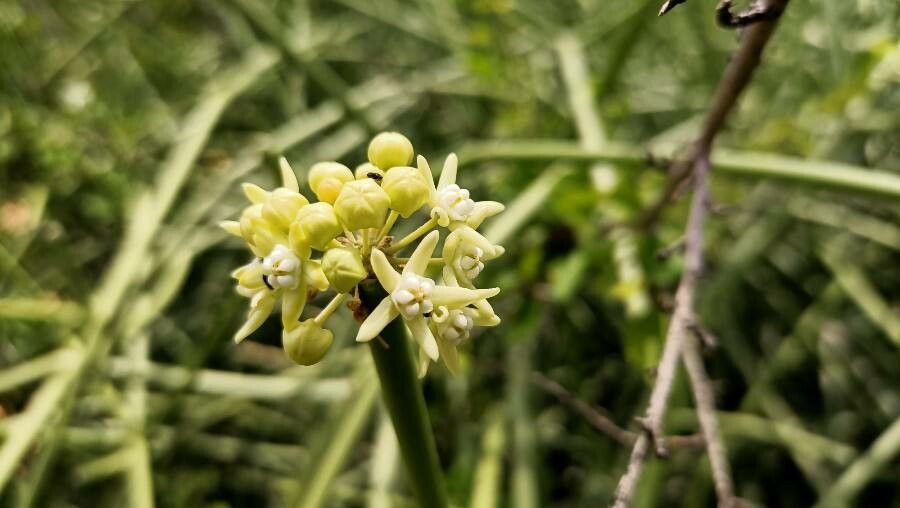From Cuttings to Clones: Mastering the Art of Propagating Cynanchum Acidum
“Cynanchum acidum”, also known as “Milkweed Vine” or “Climbing Milkweed”, is a captivating climber with beautiful, glossy leaves and clusters of fragrant, star-shaped flowers. But besides its aesthetic appeal, this hardy vine is also surprisingly easy to propagate, allowing you to expand your garden or share its beauty with friends.
Understanding Propagation Basics
Propagation, in simple terms, is the process of creating new plants from existing ones. There are various methods, but for Cynanchum acidum, cuttings prove to be the most effective. This method involves taking a piece of the parent plant and encouraging it to develop roots and become a new, independent plant.
Tools of the Trade
Before we delve into the actual propagation process, gather these essential tools:
- Sharp Pruning Shears: Clean, sharp shears will make clean cuts, minimizing damage to the parent plant and promoting successful root formation.
- Rooting Hormone: While not strictly necessary, rooting hormone can significantly boost the success rate of rooting cuttings by stimulating root growth.
- Potting Mix: Choose a well-draining potting mix specifically designed for cuttings or seedlings, containing a blend of peat moss, perlite, and vermiculite.
- Propagation Tray or Pots: You can use a propagation tray with individual cells or small pots to hold your cuttings.
- Watering Can with Fine Rose: Gently watering the cuttings is crucial for their development. A fine rose will help avoid disturbing the cuttings.
The Step-by-Step Guide to Propagating Cynanchum Acidum
-
Choose your cutting: Select a healthy, non-flowering stem from the parent plant. Aim for a stem that is about 6-8 inches long with at least 3-4 nodes (the points on the stem where leaves or branches grow).
-
Make the cut: Use your sharp pruning shears to make a clean, angled cut just below a node. This encourages the growth of roots from that specific point.
-
Prepare the cutting: Remove the leaves from the bottom 2-3 inches of the cutting. This minimizes water loss and allows the stem to focus its energy on root development.
-
Apply rooting hormone: Optional, but recommended, dip the cut end of the stem into rooting hormone powder or liquid.
-
Plant the cutting: Fill your propagation tray or pots with potting mix and make a small hole in the mix for each cutting. Plant the cuttings with the cut end buried in the mix, leaving the remaining nodes above the soil level.
-
Water gently: Use the watering can with a fine rose to gently saturate the potting mix, ensuring the cuttings are well-hydrated without disturbing the roots.
-
Provide optimal conditions: Place the cuttings in a bright, indirect light location, away from direct sunlight. Maintain consistent moisture in the potting mix, but avoid overwatering. A humidity dome or plastic bag can be used to create a humid environment that helps foster root growth.
-
Patience is key: It can take several weeks for the cuttings to develop a healthy root system. You can gently tug on the cuttings to test for root growth. If they offer resistance, they are likely developing roots.
- Transplanting: Once the cuttings have established strong roots, you can carefully transplant them into larger pots or directly into the garden. Choose a location with well-draining soil and plenty of sunshine.
Beyond the Basics
Propagating Cynanchum acidum is generally a straightforward process, but remember these tips:
- Timing is crucial: The best time to propagate Cynanchum acidum is during the spring or early summer when the plant is actively growing.
- Avoid pests and diseases: Inspect the parent plant for any signs of pests or diseases before taking cuttings. This helps prevent infection in your new plants.
- Trial and error: Every plant can be slightly different. Don’t be discouraged if your first attempt doesn’t yield immediate success. Keep experimenting and refine your technique.
By mastering the art of propagating Cynanchum acidum, you can enjoy this vibrant climber in new areas of your garden, share its beauty with fellow gardeners, and experience a rewarding gardening journey. So, take your shears, gather your supplies, and prepare to grow a whole new world of Milkweed Vines!
